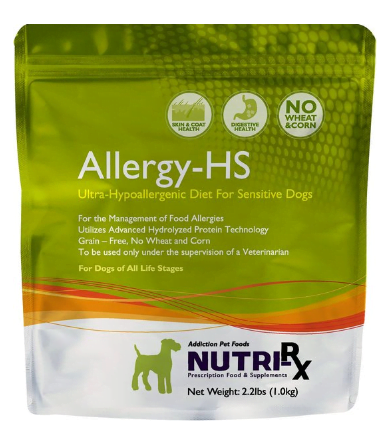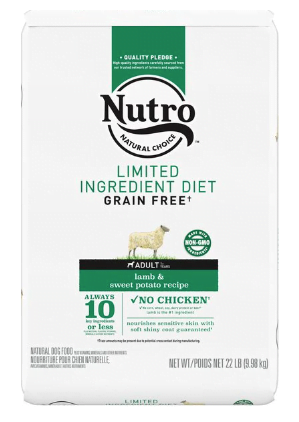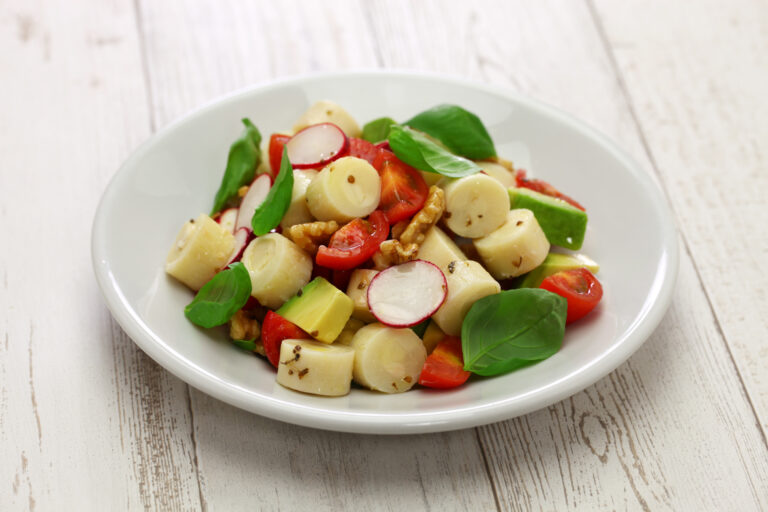Best Dog Food for Allergies |The Ultimate Guide
Imagine enjoying a lovely summer day with your best canine companion. The sun is out, the birds are chirping, and all seems right in the world. But suddenly, you notice your furry friend scratching incessantly or having tummy troubles. You’re left wondering, could it be allergies?
If this scenario sounds all too familiar, you’re not alone. Food allergies in dogs are more common than you might think, and they can turn an ordinary day into a discomforting ordeal for your four-legged friend. But worry not, because there’s a simple and effective solution that often lies right in your dog’s bowl – the right diet!
This post will dive deep into the world of dog food allergies, exploring their common causes, symptoms, and most importantly, the best diet solutions. We’ve done the heavy lifting and sifted through the myriad of dog food options to bring you the cream of the crop for dogs with food allergies. So whether you’re new to the world of pet parenthood or a seasoned pro looking for advice, this guide has got you covered. Together, let’s take the first step in turning those dog days around and ensure our canine companions lead happy, healthy, and itch-free lives!
OUR TOP 3 recommended best brand of food
Iams Skin & Coat
Nutri-RX Allergy-HS
Nutro Limited Ingredient
Best dog food for Allergies
Purina Pro Plan Veterinary
Purina Pro Plan Veterinary Diets HA Hydrolyzed Chicken Flavor Dry Dog Food is a result of meticulous teamwork among Purina’s nutritionists, researchers, and veterinarians, created specifically for dogs with sensitive stomachs. It features hydrolyzed proteins, which have been processed into smaller components to minimize the risk of adverse food reactions. The formula is highly digestible, allowing for optimal nutrient absorption. It includes coconut oil, known for medium-chain triglycerides that boost mental alertness and sharpness in dogs seven years and older. This food is ideal for dogs dealing with food allergies, food intolerance, inflammatory bowel disease, or pancreatitis. In addition to catering to specific dietary needs, it provides complete and balanced nutrition for both growing puppies and adult dogs.
First 3 Ingredients : Corn Starch, Hydrolyzed Soy Protein Isolate, Partially Hydrogenated Canola Oil
Best for breed size: Small Breeds, Medium Breeds, Large Breeds, All Breeds
Caloric Content: 342 kcal/cup
Feeding Instruction
*(cups)
| Weight | Daily Feeding |
| 3 – 12 lbs | 1/2 – 1 1/3 |
| 13 – 20 lbs | 1 1/3 – 2 |
| 21 – 35 lbs | 2 – 2 3/4 |
| 36 – 50 lbs | 2 3/4 – 3 1/2 |
| 51 – 75 lbs | 3 1/2 – 4 1/2 |
| 76 – 100 lbs | 4 1/2 – 5 1/2 |
| Over 100 lbs. | 5 1/2 plus 1/3 for each additional 10 lbs. |
Royal Canin Veterinary Diet
Royal Canin Veterinary Diet Hydrolyzed Protein HP Dry Dog Food is a specially designed, tasty diet for adult dogs and puppies. It is prepared with hydrolyzed proteins, which consist of low molecular weight peptides that can be easily absorbed in the digestive tract, minimizing the chance of causing an immune reaction. This food is enriched with optimal amounts of B vitamins and amino acids to strengthen your dog’s skin barrier. It contains Omega-3 fatty acids, EPA and DHA, which contribute to a healthy skin and coat. A unique blend of fibers supports healthy digestion, making it suitable for dogs susceptible to digestive issues, including diarrhea.
First 3 Ingredients : Brewers Rice, Hydrolyzed Soy Protein, Chicken Fat
Best for breed size: Small Breeds, Medium Breeds, Large Breeds, All Breeds
Caloric Content: 332 kcal/cup
Feeding Instruction
*Cup for Adults
| Weight | Daily Feeding |
| 4 lbs | 5/8 |
| 6 lbs | 7/8 |
| 10 lbs | 1 1/8 |
| 20 lbs | 2 |
| 30 lbs | 2 5/8 |
| 40 lbs | 3 1/4 |
| 50 lbs | 3 7/8 |
| 60 lbs | 4 3/8 |
| 70 lbs | 4 7/8 |
| 80 lbs | 5 3/8 |
| 90 lbs | 5 7/8 |
| 100 lbs | 6 3/8 |
Understanding Dog Food Allergies
Dog food allergies are essentially a negative reaction of your dog’s immune system to certain ingredients in their diet. Think of it as a false alarm where your dog’s body mistakes some food components as harmful invaders and mounts an unnecessary defense. The resulting battle can cause a range of symptoms that can make your pup feel less than their best. Some common symptoms of dog food allergies include incessant scratching, skin redness, vomiting, diarrhea, and chronic ear infections.
As for what causes these reactions, the list can be surprisingly long and vary from dog to dog. However, some ingredients tend to be more common culprits than others. These can include beef, dairy, chicken, wheat, and corn. That said, it’s crucial to remember that any food ingredient can potentially cause an allergic reaction, depending on the individual dog’s immune response. Figuring out the exact allergen can sometimes feel like a puzzle, but it’s a key step towards helping your dog enjoy their meals without any nasty aftereffects.
Role of Diet in Managing Allergies
If you’re a pet parent with an allergic dog, you’ve probably heard the term ‘hypoallergenic diet.’ This is a fancy way of saying ‘a diet that’s less likely to cause an allergic reaction.’ Hypoallergenic diets are designed with ingredients that are either novel (new to your dog’s system) or extensively hydrolyzed (broken down so much that your dog’s body can’t recognize and react to them).
Now, you might be wondering, how do you figure out which foods trigger your dog’s allergies? Enter the elimination diet. The goal here is to start with a very basic diet, typically a novel protein and carbohydrate your dog has never had before, and feed your dog this diet exclusively for a period (usually 8-12 weeks). If the symptoms subside, you then gradually reintroduce other ingredients to see if the allergic reactions return.
But remember, transitioning to a new diet isn’t something you should do overnight. It’s a gradual process that should happen over a week or two, slowly substituting a bit of the old food with the new diet each day. This helps avoid upsetting your dog’s stomach and allows your pup to adjust to the new flavors.
Factors to Consider When Choosing Allergy-Specific Dog Food
When it comes to selecting the perfect allergy-specific food for your canine companion, there are a few key factors to keep in mind. First up is the quality of ingredients. Look for whole food ingredients, with recognizable names like ‘chicken’ or ‘peas,’ rather than vague terms like ‘meat by-product.’ High-quality ingredients are not only easier on your dog’s stomach, but they’re also more nutritious.
Speaking of nutrition, that brings us to our second factor – nutritional balance and completeness. Your chosen food should meet all the dietary needs of your dog. This means it should have the right mix of proteins, carbohydrates, fats, vitamins, and minerals necessary for their health.
Next, consider your dog’s age, size, and breed. A Chihuahua will have different dietary needs than a Great Dane, and a puppy requires different nutrients compared to a senior dog. Many brands offer breed and age-specific formulas that can cater to these unique needs.
Then comes taste and palatability. Remember, the best diet is the one that your dog will eat. If they don’t like the taste of their food, it doesn’t matter how healthy or allergy-friendly it is.
Last but certainly not least, consider your budget and the availability of the food. There’s no point in choosing a food that’s perfect in every way if you can’t afford it or if it’s not readily available. Luckily, with the vast selection of dog foods on the market, you’re likely to find a match that suits both your dog’s needs and your wallet!
Role of veterinary consultation when dealing with dog food allergies
Choosing a diet for a dog with food allergies is like trying to solve a mystery, and in this scenario, your vet is your Sherlock Holmes. A knowledgeable and experienced veterinarian is crucial in diagnosing and managing your pet’s food allergies. They can help determine whether your dog’s symptoms are indeed due to a food allergy or if there’s another underlying issue at play. Plus, they can guide you through the process of an elimination diet, which can be a real game-changer when trying to pin down what’s causing your dog’s reactions.
But the vet’s role doesn’t stop there. Once you know your dog has a food allergy, your vet can provide professional advice on making diet changes and selecting the right hypoallergenic food. They can consider factors such as your dog’s age, breed, weight, and overall health status to suggest a diet that not only manages the allergies but also meets all of your dog’s nutritional needs. So, while the internet can provide some great general advice (like this blog!), never underestimate the importance of personalized advice from your trusted vet!
Conclusion
In wrapping up, it’s clear to see that navigating the world of food allergies in dogs isn’t as daunting as it might initially appear. Central to managing these allergies is the correct diet. A hypoallergenic diet, whether it’s limited ingredient, hydrolyzed protein, grain-free, novel protein, or vegetarian, can be a game-changer in helping to alleviate your dog’s allergic symptoms.
But remember, you’re not in this alone! Your vet is an invaluable partner in this journey. They can help identify potential allergens, guide you through diet changes, and recommend the best hypoallergenic food tailored to your dog’s needs. With their help and a little patience, you can turn the tide on your dog’s food allergies, leading them towards a happier, itch-free life. So, if you suspect your furry friend is dealing with food allergies, don’t hesitate to reach out to your vet and explore the power of hypoallergenic diets together.
References
Subscribe to our weekly newsletter below and never miss the latest article.












